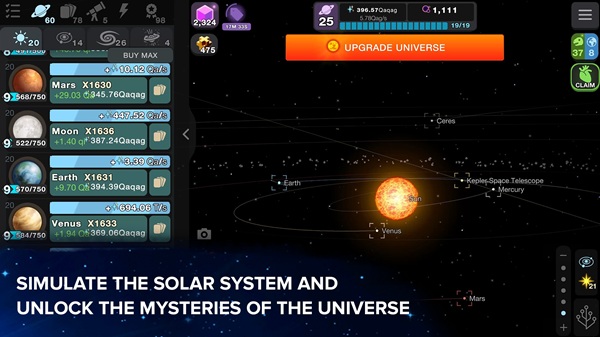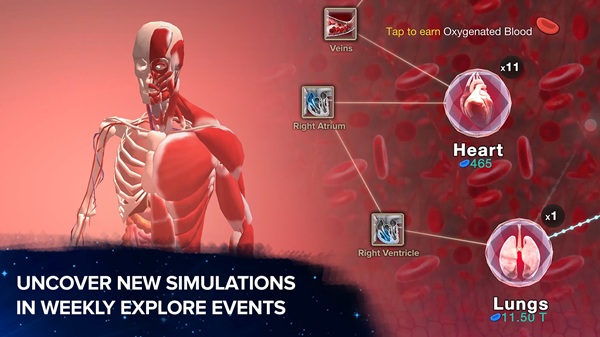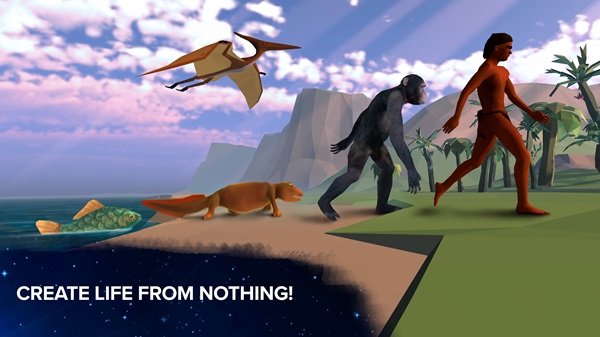Cell to Singularity
Cell to Singularity is a science-driven evolution game where life grows from tiny organisms into complex forms, helping curious players grasp key moments in natural history through simple taps.
screenshot
Information of Cell to Singularity
Video

Introduction to Cell to Singularity APK
Cell to Singularity APK is the installation file used to access the evolution-themed game built around scientific milestones and idle progression. The game takes a real-world concept—how life formed and changed over billions of years—and turns it into a simple tap-based journey. This game blends science, progression mechanics, and interactive learning in a way that lets anyone follow the timeline of life without needing deep biology knowledge. In this article, you’ll find clear explanations of how the game functions, what makes its systems easy to understand, and whether it fits what you’re looking for.
The game focuses on helping players grasp evolution in a relaxed, incremental format. It’s built by ComputerLunch, a studio that leans heavily into science themes and accessible design. The sections ahead will walk through the core idea, main features, strengths, small drawbacks, and tips that help new players enjoy the flow from cell formation to futuristic concepts.
Core Idea Behind the Game
The main concept in Cell to Singularity centers on guiding life from its smallest cellular forms to advanced human societies. In this game, entropy acts as the core resource, increasing with each tap and helping new evolutionary stages appear. This steady flow shows how basic organisms shift into complex species over time, eventually leading to scientific ideas and technologies shaped by human creativity.
People who enjoy science, timelines, or laid-back games often appreciate this style. Instead of reading long articles about geology or early life, you get a visual timeline that breaks everything down into tiny steps. It solves a common struggle—understanding evolution without being overwhelmed—by offering progress one small action at a time.
Key Gameplay Flow Explained
The game starts slowly, letting you generate entropy through taps. Over time, upgrades automate some of that process so the pace feels smoother. You start by developing basic organisms, then expand into fish, land animals, mammals, early humans, and later, modern achievements. Every upgrade nudges you further along the timeline, which creates long-term momentum.
In Cell to Singularity, the resource systems are straightforward enough for players of any age. Entropy fuels the growth of early life, while ideas support human progress through later stages. The interface lays everything out clearly, helping you navigate each branch without confusion. Moving from one phase to the next feels smooth because every path is shown visually, making your decisions easy to follow.
Major Features and Game Elements
Evolution Tree & Life Stages
The evolution tree presents a clear map of how species change across different eras. You start at microbes, then reach sea organisms, reptiles, mammals, and eventually humans. These transitions highlight major scientific moments, making the process of learning feel organic. By showing each step visually, the game helps players understand how complex life forms appear gradually rather than suddenly.
Civilization and Technology Growth
Once the timeline reaches human history in Cell to Singularity, the tech tree becomes its own major section. Ideas act as the main resource that drives inventions, breakthroughs, and cultural shifts. Players move through early tools, major societal changes, industrial growth, and concepts that point toward future science. This setup helps show how human knowledge builds gradually over time, similar to the way real historical development unfolds.
Habitat Visuals & Sound Design
Each habitat mirrors the era you’re currently progressing through. Ocean areas light up when early organisms flourish, while later stages showcase forests, cities, and eventually futuristic landscapes. The music and sound effects support the atmosphere, offering a calm backdrop that keeps the focus on learning and progression.
Why Players Find It Helpful
Many players enjoy Cell to Singularity because it turns complicated scientific ideas into simple actions. Instead of reading long explanations, they watch concepts unfold through upgrades and animations. It fits into short breaks, long sessions, or anything in between, making it flexible for students, workers, or anyone curious about science.
Curiosity is rewarded at every stage. Each milestone shares bits of information that help you understand why the next step matters. People who learn visually or in small bursts often appreciate how the game organizes everything. For students or science fans, the evolutionary timeline helps reinforce basic biology concepts through repetition and visual structure.
Tips for New Players
New players can keep their progress smooth by planning their upgrades instead of tapping without direction. It helps to prioritize improvements that boost passive entropy so progress continues even when you’re away. Focusing on long-term branches early also prevents slowdowns later in the timeline, giving you a more stable pace as the game expands.
Managing ideas wisely during the human stages in Cell to Singularity helps prevent gaps in progress and keeps each milestone attainable. Keeping your sessions short also makes the pace feel fresher and less repetitive. With these simple habits, the game becomes easier to follow and stays engaging as you move through each era.
Strengths and Possible Drawbacks
The game’s strengths include its educational depth and simple controls. The calm pace allows players to learn without pressure, and the evolution paths are easy to follow thanks to the clear interface. Its visuals and structured tree systems help players understand scientific patterns they may have struggled with elsewhere.
There are a few minor drawbacks. Tapping can feel repetitive for some, especially in early or late stages without enough automation. Progress may slow down during advanced eras, which might test the patience of players who prefer fast-paced games. Still, these issues are small compared to the value it offers to science-loving players.
Conclusion
Cell to Singularity gives players a smooth way to understand scientific progress through small steps and clear visuals. People who appreciate calm gameplay or learning-based systems often find it meaningful because it breaks down complex topics into friendly interactions. Throughout this article, you explored its gameplay flow, main features, strengths, and helpful tips for beginners.
If you want to try the full experience, grab the official and safe Cell to Singularity APK file at APKJaka and start charting your own path through life’s long timeline.
Frequently Asked Questions Cell to Singularity
-
What is Cell to Singularity APK?
Cell to Singularity APK is the installation file used to access the evolution-themed game on Android. It lets you follow life’s timeline from simple cells to advanced civilizations. -
What is Cell to Singularity about?
Cell to Singularity is a science-based idle game where you grow life step-by-step using entropy and upgrades. It’s perfect for players who love chill progression and learning at the same time. -
Is Cell to Singularity free to play on Android?
Yes, the game is free on Android with optional in-app purchases. You can still progress comfortably without paying. -
Does Cell to Singularity work offline?
Most parts of the game can run offline, making it easy to play during commutes or breaks. Some features may sync when you reconnect. -
Is Cell to Singularity educational?
Absolutely—its evolution tree teaches real scientific concepts through simple steps and visual milestones. It’s a fun way to pick up bio and history basics without feeling like you're studying.





